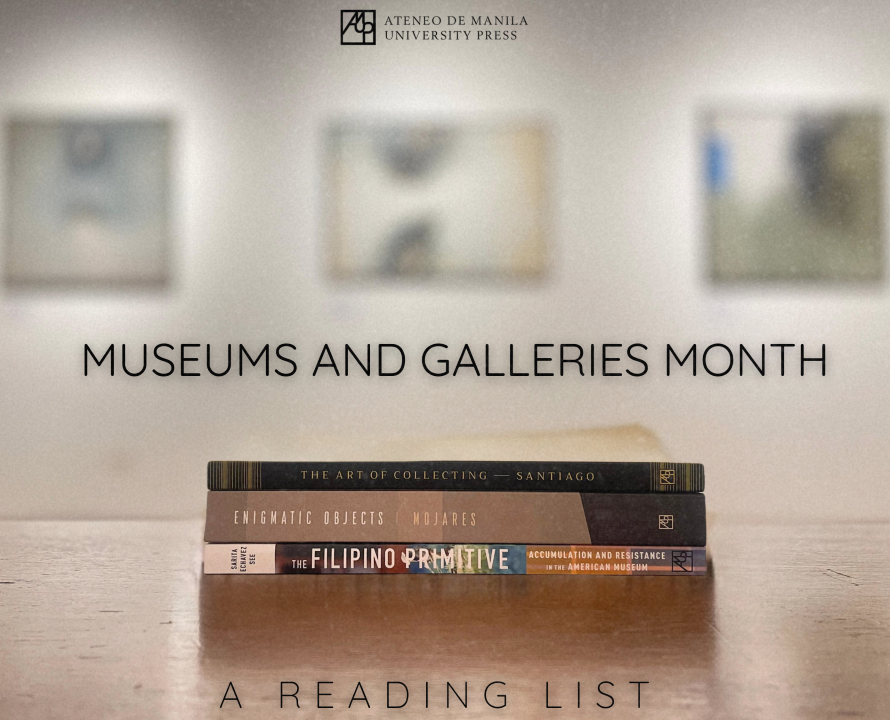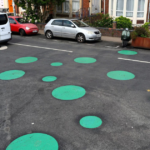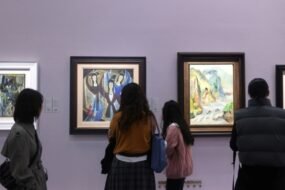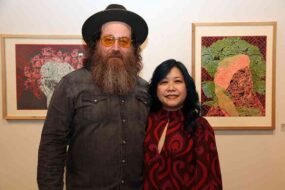
Museums and Galleries Month is about more than appreciating the aesthetics of paintings and artifacts. It’s the perfect time to deepen our knowledge of these culturally rich spaces and the complex stories that are being told within them. To celebrate, we’ve compiled a short list of books that will surely stoke your curiosity and leave you wanting to learn more!

The Art of Collecting: A Guide to the Philippine Market by Joseph Sedfrey S. Santiago
How does one navigate the elusive Philippine art scene?
What do you do during an auction? How do you spot a forgery? This book is a tell-all on the ins and outs of the Philippine art market, apprising its primary and secondary sectors, such as art galleries, art fairs, auction houses, and similar others.
A compilation of personal experiences as a collector, researcher, short-lived gallery part owner, and adviser to art collectors, supported as well by media reports and scholarly writing on international art markets, Santiago offers very compelling lessons on making wise investment decisions for your art collection. Whether you’re a fledgling collector or an art enthusiast, there is much you can learn from this book!
Get your copy in paperback: Shopee and Lazada

Enigmatic Objects: Notes Towards A History of the Museum in the Philippines by Resil B. Mojares
What makes a museum? Is it simply just a collection of historical objects? What about the people behind these collections? Do their motives matter? The answer is more complicated than you think.
Enigmatic Objects by Resil B. Mojares traces the development of museums during the colonial Philippines from those housed in Spanish-era educational institutions and private collections of ilustrados to the American-era systematized public libraries and museums. Through fascinating vignettes, it tickles, stimulates, and intensifies our curiosity about the treasures, artifacts, and oddities that have been unearthed, collected, and displayed throughout the centuries.
Read about the skulls of bandits measured to explain the phrenology of crime, the fabled pestle of Lapulapu, teapots made of coconuts, and many more! The book then invites readers to question and reflect on the nature of our museums themselves. When you enter a museum, it is important to equip yourself with questions of who, what, when, where, why, and how—to become more than a spectator but an active participant in the shaping of narratives about our past.
Get your copy in paperback: Shopee and Lazada

The Filipino Primitive: Accumulation and Resistance in the American Museum by Sarita Echavez See
Museums are not the end-all-be-all of information. A museum is curated and controlled, and the stories within it are just as well.
These museum objects are accumulated. See problematizes the manner of accumulation done by American colonial officials. The book reveals that to this day many international museums portray the colonial Philippines as primitive and desperate for civilization, citing the Carl Guthe collection in the Museum of Anthropology of the University of Michigan and the Frank Murphy Memorial Museum in Michigan as examples.
By exposing the nitty-gritty aspects of museum work, and intertwining it with literary and art analysis, See strongly urges museum-goers to never just accept how an object is presented, as it may be upholding harmful stereotypes. To question is an important step in the resistance against colonial mentality.
In the foreword, Vincenz Serrano states that the book “demonstrates that the struggle for objects is at the same time a struggle for cultural self-determination, political autonomy, and artistic provocation: the self-possession of the Filipino/a is made possible by a refusal to be collected, transported, cataloged and displayed.”
Get your copy in paperback: Shopee and Lazada









